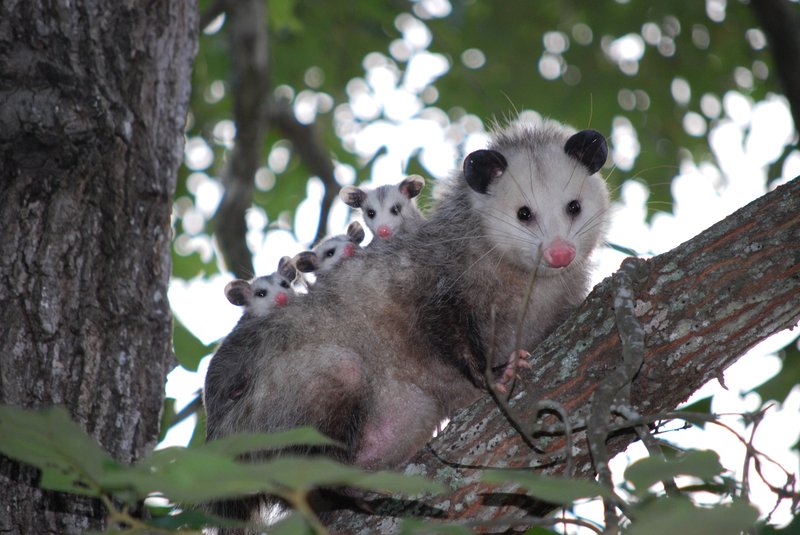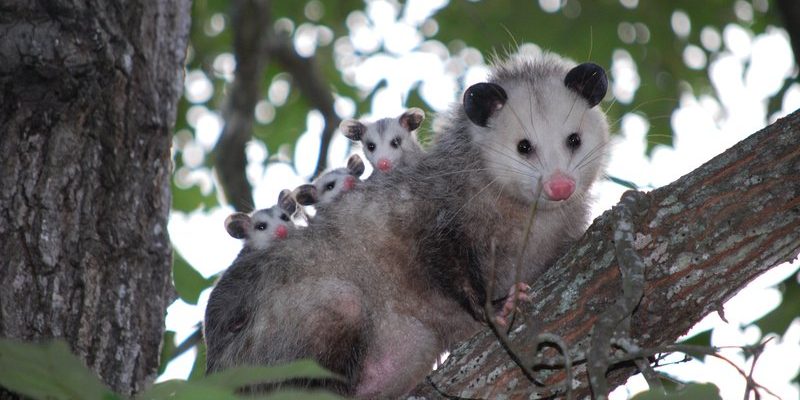
When you picture an opossum, you might envision a small creature with big ears, a long snout, and a rather adorable look. But underneath that cute exterior lies an animal that has mastered the art of survival. Whether it’s braving extreme weather, finding food in polluted areas, or dealing with predators, opossums have some incredible strategies that keep them going. Let’s dive deeper into how these resilient animals make it work.
1. Adaptability to Weather Extremes
Opossums are incredibly adaptable when it comes to weather conditions. In winter, when the temperature drops, they have the ability to find shelter in various places such as hollow logs, abandoned buildings, and even under decks. They’re not picky about their habitats. This adaptability helps them conserve energy and stay warm.
In summer, they’re at home in the heat, too. Opossums often seek out shady spots during the hottest parts of the day to avoid overheating. They’ve even been known to cool off by soaking in water when they can. This behavior showcases their ability to respond to temperature changes and manage their body heat effectively.
It’s quite interesting to see how these animals have evolved over time to withstand the temperature fluctuations that can be so challenging for other species. Honestly, their ability to adapt is a testament to the power of evolution and survival instincts in the animal kingdom.
2. Scavengers at Heart
One of the most impressive traits of opossums is their role as scavengers. They’re often referred to as nature’s cleanup crew. Opossums have a varied diet that includes insects, fruits, small animals, and even garbage. This wide-ranging palate allows them to thrive in urban environments where food sources may be less predictable.
Here’s the thing: because they eat just about anything, they play a crucial role in maintaining the ecosystem. They help control insect populations and clean up carrion, which can reduce disease risks. If you think about it, they’re like the unsung heroes of their natural habitats, contributing in ways we often overlook.
What’s even more fascinating is how they manage to hunt and forage efficiently. Opossums have a keen sense of smell and great climbing skills, allowing them to access hard-to-reach food sources. And they’re not shy about rummaging through trash cans for a tasty snack. This scavenging lifestyle allows them to maximize their chances of survival, no matter the environment.
3. Tolerance to Pollution
You might be wondering how opossums manage to survive in areas that humans have heavily polluted. Surprisingly, they display a remarkable tolerance to toxins that many other animals simply can’t handle. Opossums can consume certain types of rotting food that would be harmful or lethal to other animals, which is a significant advantage in urban settings.
Studies have shown that they can even clear up various pathogens from their systems without suffering severe consequences. This ability allows them to thrive in environments where food might be scarce or contaminated, making them uniquely suited to living alongside humans.
Their resilience in the face of pollution highlights their importance in urban ecosystems and their ability to adapt. It’s almost as if they have a built-in defense mechanism against the environmental stresses that come from living near humans.
4. Defense Mechanisms Against Predators
While opossums may not be the fastest or the strongest animals in the wild, they have developed some clever defense mechanisms to avoid becoming a meal for predators. One of their most famous tactics is playing dead, also known as “playing possum.” When threatened, they can drop to the ground, becoming limp, and emit a foul odor that mimics the scent of a decaying animal. This can deter potential predators who prefer fresh prey.
Additionally, opossums have a strong ability to climb trees, helping them escape from ground predators. They often take refuge high up in branches, where they can rest and avoid danger. This combination of clever tactics keeps them safe in environments where threats are more common.
Even when cornered, opossums are not defenseless. They have sharp teeth and can bite when necessary, providing them with another layer of protection against potential threats. The way they balance these tactics shows their adaptability and resourcefulness in a diverse range of habitats.
5. Reproductive Strategies and Adaptability
Reproduction plays a crucial role in the survival of opossums in harsh environments. They have a relatively high reproductive rate, producing multiple offspring in one litter. A female opossum can have up to 13 babies at a time, which is significant for maintaining their population in challenging habitats.
These young opossums are born underdeveloped and continue their growth inside their mother’s pouch. This method of caring for their young helps ensure that they have a better chance of surviving in unpredictable environments. As they grow, the young can learn the vital skills they need to navigate their world effectively.
Moreover, opossums practice delayed implantation, which means the fertilized egg can pause its development until conditions are right. This strategy allows them to time their breeding with periods of food availability. By managing the timing of their offspring, they can increase the chances of survival for the next generation.
6. Learning to Coexist with Humans
As urban areas expand, opossums have found ways to coexist with humans. They’ve learned to navigate our trash and even take advantage of bird feeders. By doing this, they’re able to thrive in environments where natural food sources may be limited.
Interestingly, their presence can actually benefit neighborhoods. Opossums eat ticks, keeping populations in check and potentially reducing the risk of Lyme disease. They’re also not aggressive, which makes them less likely to cause harm to humans or domestic animals. In fact, having opossums around can be a positive sign of a healthy ecosystem.
And let’s face it, they’re pretty adorable. Just watching an opossum go about its day can remind us of the importance of every species in our environment. Their unique adaptations and behaviors illustrate the resilience of wildlife even in urban settings.
Overall, the way opossums navigate their world is both fascinating and essential for maintaining balance in our ecosystems.
7. Conclusion: The Resilient Opossum
Opossums are truly remarkable creatures that showcase the beauty of adaptability and survival. From their scavenging habits to their clever defense mechanisms, they’ve found ways to not just survive, but thrive in harsh environments. These little mammals remind us that nature has an incredible capacity to adapt, even in the face of significant challenges.
So next time you come across an opossum, whether in your backyard or on a late-night stroll, take a moment to appreciate their resilience. They hold valuable lessons about survival and coexistence, and they play an important role in our environment. Opossums embody the idea that even in the toughest situations, there’s always a way to make it through, and that’s something worth celebrating.

